Near the Little Falls Marina, a community project is finally in bloom. The Native Pollinator Garden was designed to support local ecosystems and beautify the area. Spearheaded by Master Gardener, Sharon Giammaria, in partnership with Rotary Club of Little Falls, the garden provides an essential habitat for bees, butterflies, birds, and other pollinators.
A garden template was used from the Pennsylvania Department of Conservation and Natural Resources. In November 2023, seeds were purchased from Prairie Moon and started indoors. To prepare the site, existing grass was smothered with cardboard and mulch in the fall of 2023. In the spring of 2024, one tree and five shrubs were purchased and planted. The plants grown from seed were transplanted into the garden in August of 2024.
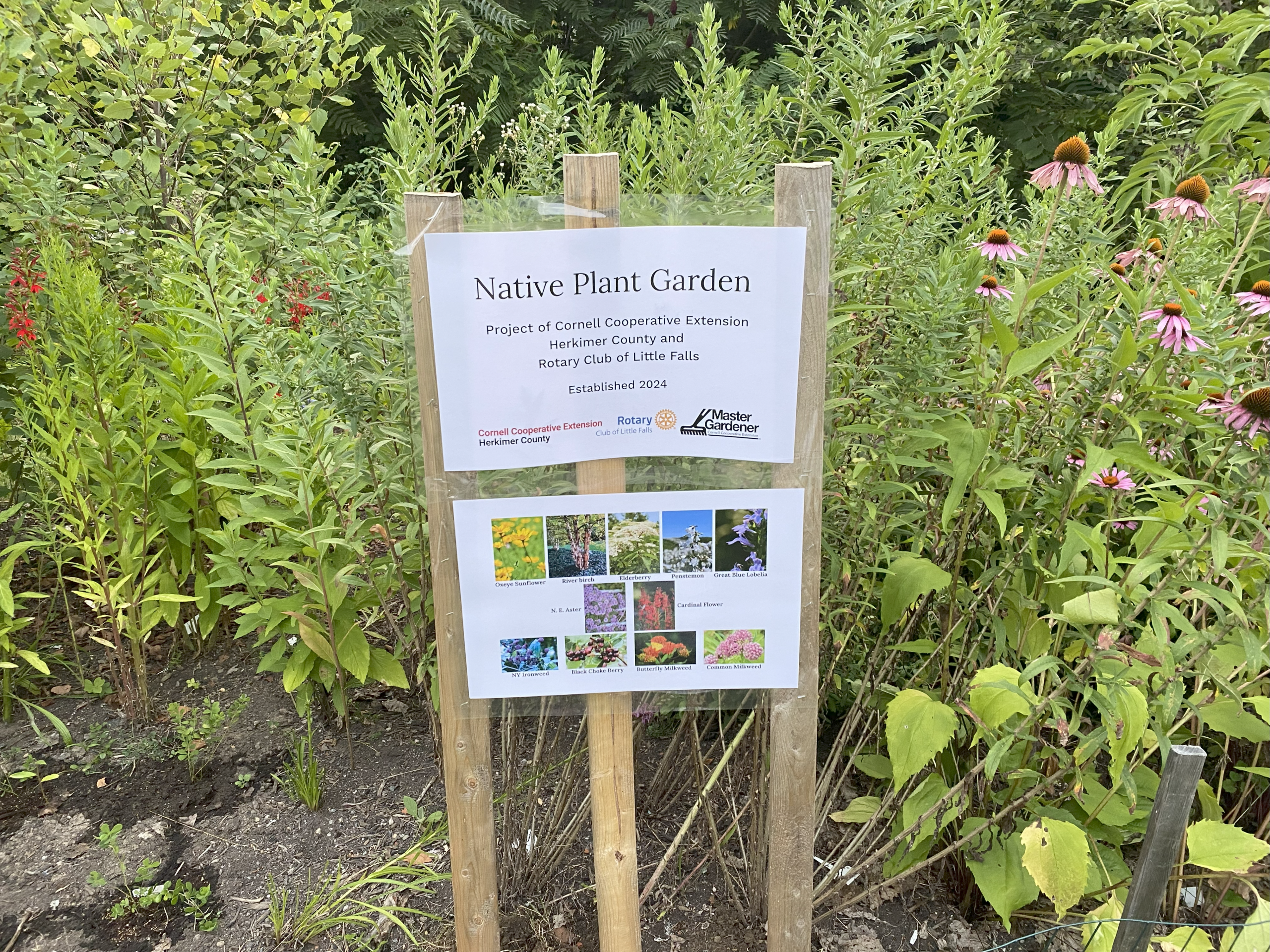
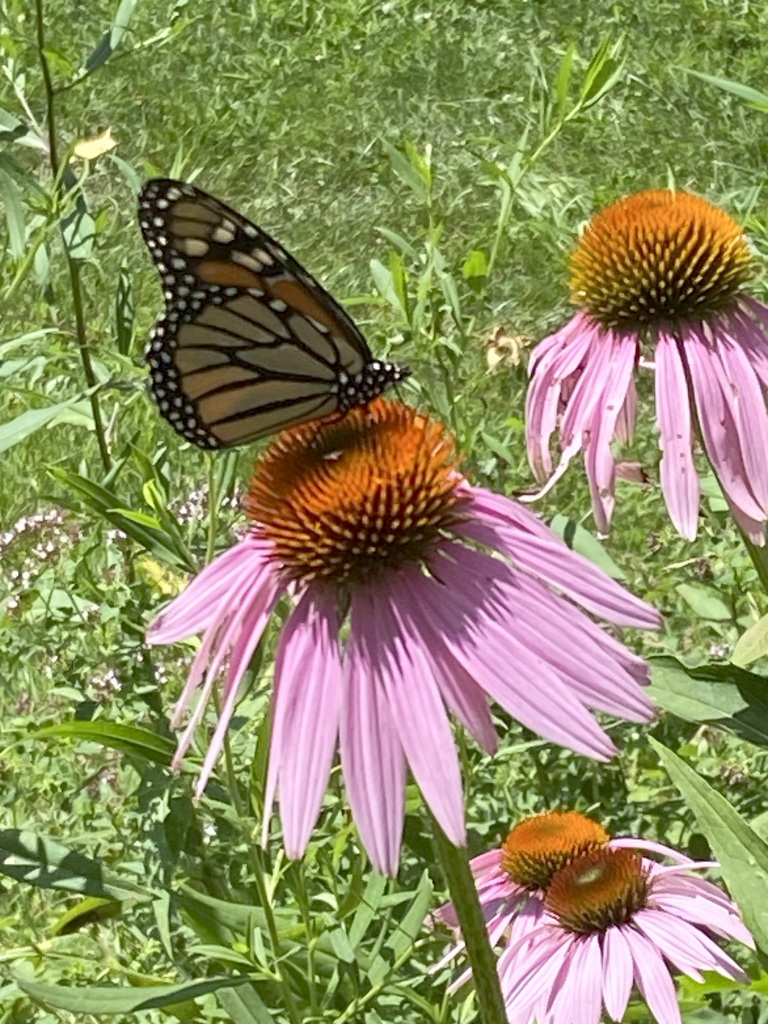
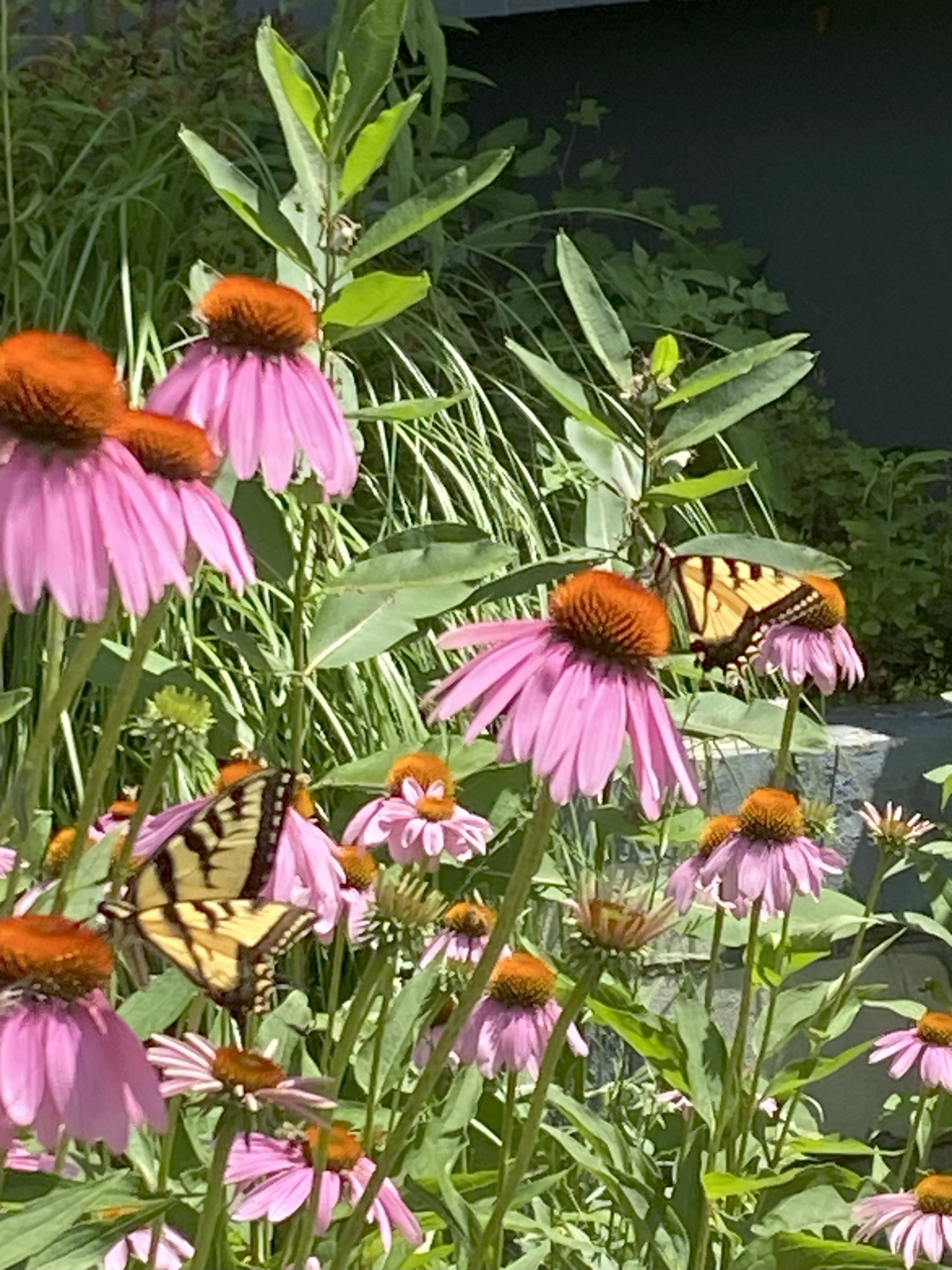
The garden features a vibrant mix of native plants including milkweed, lobelia, aster, columbine, spicebush, elderberry, and more. These species were chosen specifically for their ability to thrive in local soil and climate conditions; requiring less water and maintenance than non-native ornamentals.
A plant is considered native if it has occurred naturally for thousands of years in a specific region, ecosystem, or habitat without human introduction. Including native plants on your property can have a profound impact on wildlife, climate, and even human well-being. Native plants play a critical role in the environment because they are the foundation of the food web that all animal life depends on. They serve as host plants for many insects, flourish in the conditions of their native regions, have deeper root systems that help manage water and soil health, and can sequester more carbon. These traits make them essential for supporting birds, pollinators, and other wildlife, especially as these species face increasing stress from climate change.
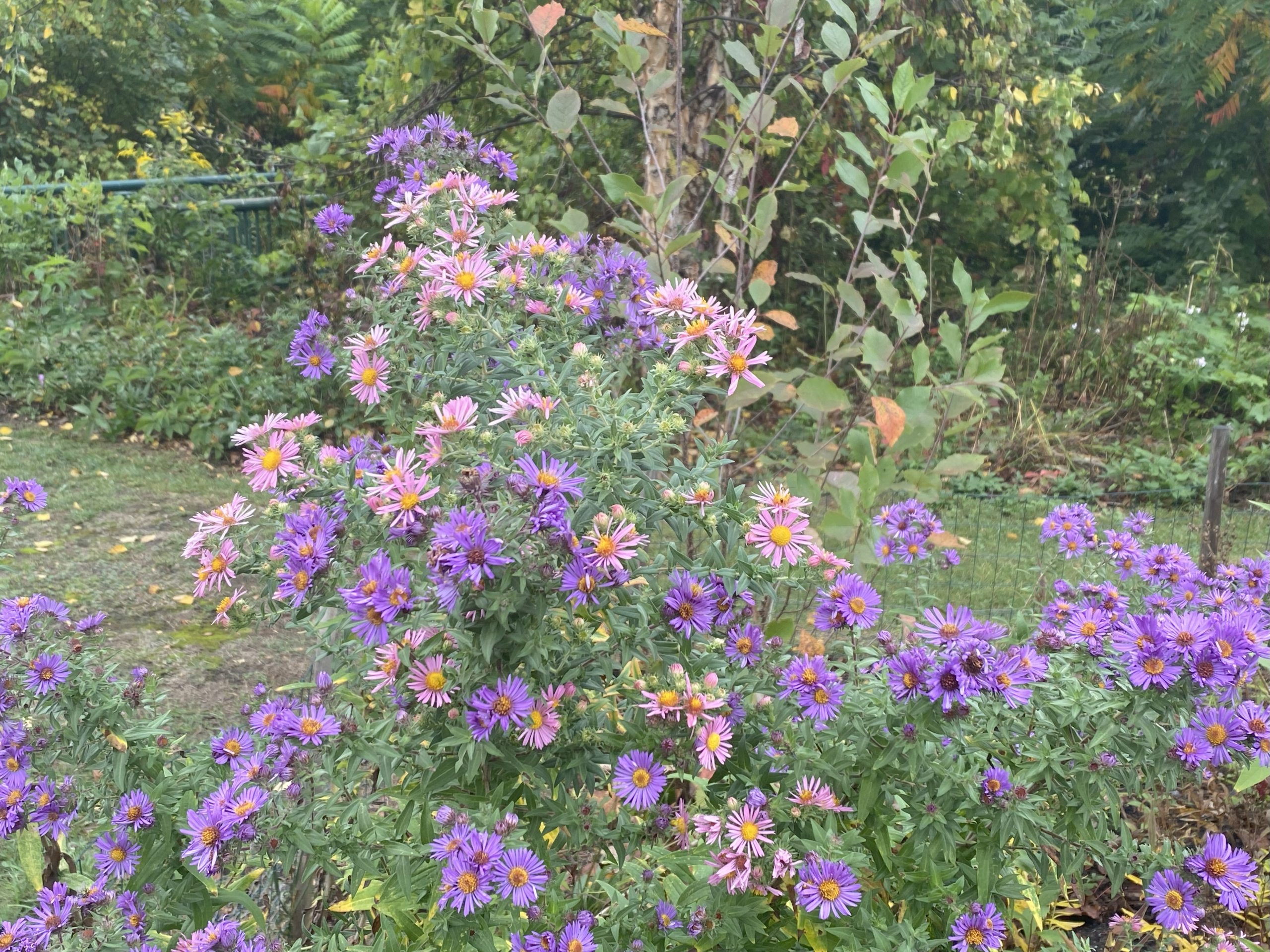
In contrast, non-native plants are species that evolved in other parts of the world or have been modified by humans into forms that don’t naturally exist. While they may be visually appealing or easy to grow, non-native plants generally do not support native wildlife as effectively as native species. In some cases, they can escape cultivation and become invasive, damaging natural ecosystems and displacing native flora and fauna. This imbalance, along with pesticides, habitat loss, light pollution, and climate change, have contributed to alarming trends in biodiversity loss. Prioritizing native plants in landscaping and restoration efforts is one of the most impactful ways to help reverse these trends.
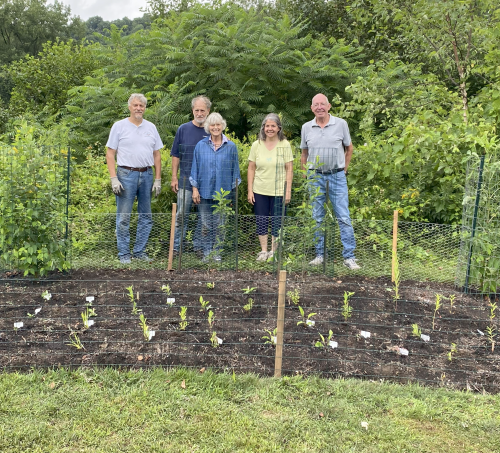
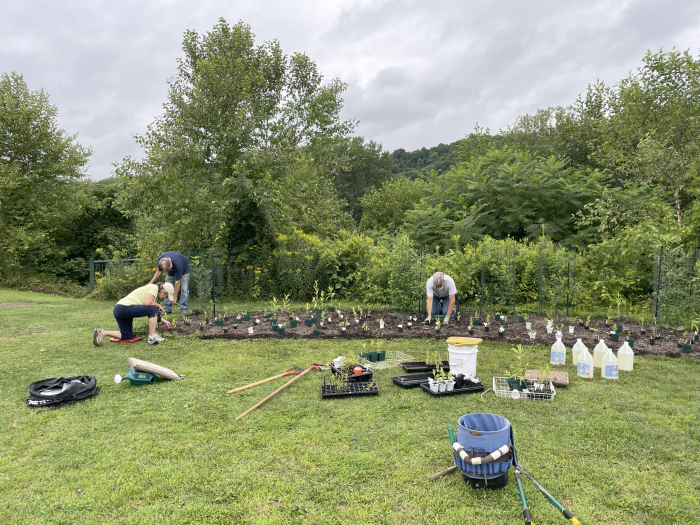
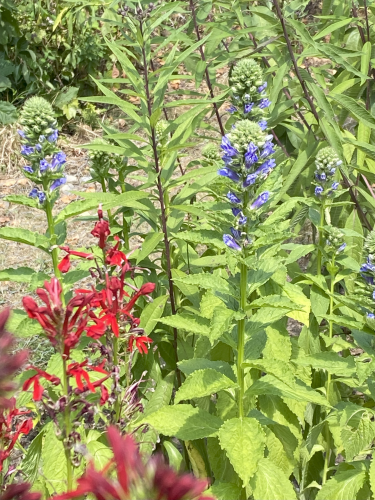
To start your own native pollinator garden, begin by converting a portion of non-productive lawn into a thriving habitat for native plants. This can be done in your own yard, in community gardens, or even in public parks. First, gather essential information about your site, including its size, location, amount of sunlight, and soil moisture levels. Next, research a list of native plants suited to your specific region and site conditions. When planning your garden, choose a variety of plants that bloom at different times to support pollinators throughout the growing season. Prioritize keystone plants, which provide crucial support for local ecosystems. Finally, decide whether you want to start your garden using seeds or live plants, and locate reputable sources to obtain them. With thoughtful planning, your native garden can become a vital refuge for pollinators and other wildlife.
In speaking about the Native Pollinator Garden project with Master Gardener, Sharon Giammaria, she said, “Planting a native plant garden is also a joyful experience for the gardener. Watching a garden come to life with blooms, pollinators and wildlife, including bees, caterpillars, butterflies, and hummingbirds is deeply satisfying. Many thanks to the Rotary Club of Little Falls for their support and the work of volunteers which made the project possible.”
The Native Pollinator Garden is a shining example of how small, community-driven projects can make a meaningful difference. In Little Falls, the buzz of new life has already begun.
Alexandra Tamburro is a NY Public Health Fellow assigned to Cornell Cooperative Extension Herkimer County. She is committed to contributing to civic programs that strengthen local communities, address social problems, and provide disaster preparedness. With fifteen years of experience in disaster relief across the United States and the Virgin Islands, she has worked on the ground in communities affected by natural crises, helping to rebuild and support recovery efforts. Additionally, Alexandra co-created a community garden in Frankfort to address food insecurity, foster local connections, and promote environmental stewardship. On the weekends, you may find her with her camera in hand at her shop, Main Street Mercantile, in Little Falls. Her photography and writing have been used by various non-profits and featured in art galleries throughout New York State.
Article published October 2, 2025.
